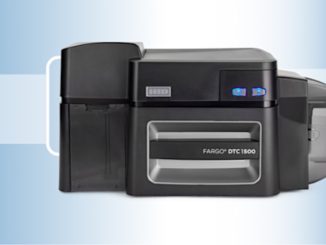
With smartphones the preferred way for students in higher education to manage and utilise their digital identities, user experience improves when universities shift physical access control from plastic ID cards to digital credentials in smartphones.
Much has been written about Generation Z as “digital natives” tethered to their smartphones. The relationship between teens and twenty-somethings with their mobile devices continues to evolve as more and more of the actions of everyday life become doable via phone app.
While high school students became subject to the national government ban on phone use in schools from 29 April, university campuses are another matter entirely, with phone use an increasingly critical enabler of the student experience.
The ability to enrol in and access services, conduct transactions, order food deliveries, verify identity, socialise, and recreate via their smartphones has fast become an expectation of Generation Z members. And why not? It’s convenient.
But tucked away in students’ purses and wallets – and often kept handy within phone cases – can be found another ubiquitous artefact of campus life – the credit card-sized student ID card.
RFID-enabled student ID cards are still used at university and polytechnic campuses across the country to verify identity, access services and facilities, borrow library books, purchase printing and photocopying, and receive discounts.
“Purposefully putting human needs and expectations at the center of higher education digital transformation will improve university success.”
Interestingly, some campuses in Aotearoa have recognised the ubiquity of smartphones and have introduced smartphone apps or ‘wallets’ that can be used by students to pay for a range of services, course supplies, and food on campus, as well as to store an electronic copy of the student ID card. But this appears to be the exception rather than the rule.
Plastic student ID cards are something that the parents of Generation Z students would remember from their time on campus last millennium, but for the tertiary students of today they’re old school, they’re administratively cumbersome, `and they’re just another thing to have to carry around.
With smartphones already capable of being used to pay for campus services and to hold forms of identification, wouldn’t it be great if they could also be used to eliminate the need for a student ID card by also providing access to facilities on campus?
The good news is that they can. In fact, for many leading universities around the world, mobile access has become the de facto standard.

Tapping into what’s important
According to New Zealand research by Susanne Aldrich, it is becoming increasingly rare to see young people without a mobile device on their person. Aldrich cites several studies that indicate that “students see their devices as extensions of themselves” and that “mobile phones have become a continuum of a young person’s attachment to the world.”
Other significant factors, writes Aldrich, are the convenience, mobility and usability provided by mobile devices, but also – importantly – their affordability compared with other kinds of technology.
It was with the student experience in mind that the prestigious Les Roches hospitality business school’s campus in Marbella, Spain, migrated to a mobile credentials-based system that replaced plastic access cards with a digital ID on a smartphone.
“Everything here is about the student experience,” said Mano Soler, Director of Student Services and Operations at Les Roches Marbella. “It is our main driver and the reason we embrace and foster innovation — because innovation makes our students’ lives easier and supports their well-being through secure technology.”
HID’s patented “Twist and Go” technology enables the use of smartphones from a distance, simply by using a gesture like turning a key.
Les Roches selected HID to create a mobile ecosystem enabling students to authenticate themselves via the HID mobile credential in order to access wide-ranging services, including parking garage systems, building entrances, vending machines, laundry facilities, printers, point-of-sale at restaurants/on-campus eateries, class attendance tracking, and dormitory room door locks.
“You cannot discount the value of mobile when it comes to today’s student populations,” said Soler. “It is their way of life. They were ‘born digital’ and they have an expectation when it comes to smart living — for them, it’s a mobile-first world. We get it. We embrace it.”
Digital credentials also mean fewer cards and keys to remember – or lose! And if a student misplaces their phone there’s no need for panic, as access to the digital credential is not available without verified access to the phone via PIN or biometric authentication. Once a unique mobile credential is installed on a smartphone, it is unavailable for installation elsewhere until it is deactivated.
With a long-read range and smart device sensors, students can easily access security doors, gates and school parking from a distance, a handy feature particularly given security concerns in campus neighbourhoods across Aotearoa. HID’s patented “Twist and Go” technology enables the use of smartphones from a distance, simply by using a gesture like turning a key.
Enrolment is also made simple. A student receives an invitation via email, downloads the app and enrols. The mobile ID is provisioned straight to the student’s smart device remotely anytime and anywhere – so no more standing in queues. Getting a new or replacement mobile ID takes seconds and is literally in the student’s hand.
Mobile also means no physical waste and a reduced carbon footprint — a huge plus for students who value sustainable technology.
A digital transformation win
Tertiary institutions across Aotearoa have in recent years made significant inroads into their digital transformation journeys while also grappling with the unprecedented disruption wrought by Covid-19 and post-pandemic economic headwinds.
If anything, these challenges reinforce the necessity of progressing digital transformation strategies apace to maximise attractiveness, sustainability, and savings. According to a November 2023 EY report, “purposefully putting human needs and expectations at the center of higher education digital transformation will improve university success.”
The importance of human-centricity is evident in the University of Auckland’s digital strategy, which notes that digital identity is “necessary to personalise services and create respectful and benevolent outcomes, unifying fragmented digital touchpoints into safe, helpful, and connected experiences.”
With smartphones the preferred way in which students utilise their digital identities, the user experience improves – for both students and administrators – when universities shift physical access control from plastic ID cards to smartphones.
“the most rewarding aspect truly is connecting to our students in a way that’s important, convenient and meaningful to them — keeping them connected and secure via a device that’s already an extension of their existence.”
For students, mobile IDs can help with quick and contactless enrolment and transactions. For administrators, Mobile solutions such as HID’s mobile access using app or mobile wallet enable centralised management of mobile identities via a cloud-based portal – so no more programming and printing of RFID student access cards.
For administrators at Les Roches Marbella, the move to mobile digital credentials was aimed at driving improvements through back-office processes and procedures to save time and resources. This included achieving efficiencies around the school’s student intake registration/check-in process each semester.
Loading ID credentials individually onto RFID cards, then printing each of them meant bottlenecks, delays, and errors. In contrast, the HID mobile solution achieves efficient and secure remote enrolment – with shorter-term access parameters for contractors and other temporary users.
The solution is also handy for institutions possessing multiple campuses with different access control systems. With a mobile access solution supporting multiple identities per mobile device, a student can simply receive a new mobile identity on their phone before leaving or upon arrival.
Ultimately, despite the clear benefits of mobile credentials to university administrators, the key advantage to mobile is its human centricity. As Juan Luis Velasco, IT Manager at Les Roches Marbella, puts it, “the most rewarding aspect truly is connecting to our students in a way that’s important, convenient and meaningful to them — keeping them connected and secure via a device that’s already an extension of their existence.”
To find out more about the HID mobile access solution, download the ebook: Mobile Access Higher Ed eBook (hidglobal.com)









